
If you're a regular here, you know that food is a big part of our life. So, I was keeping my fingers crossed that Theo would be a good eater. And boy, is he ever! He wants to eat anything we're eating, whether it's avocado toast or pulled pork or ice cream. We have to be careful what we eat in front of him. Like with every other major milestone, I had so many questions about the best way to start giving Theo solid foods. I thought I'd share our process here, in case you have the same questions.
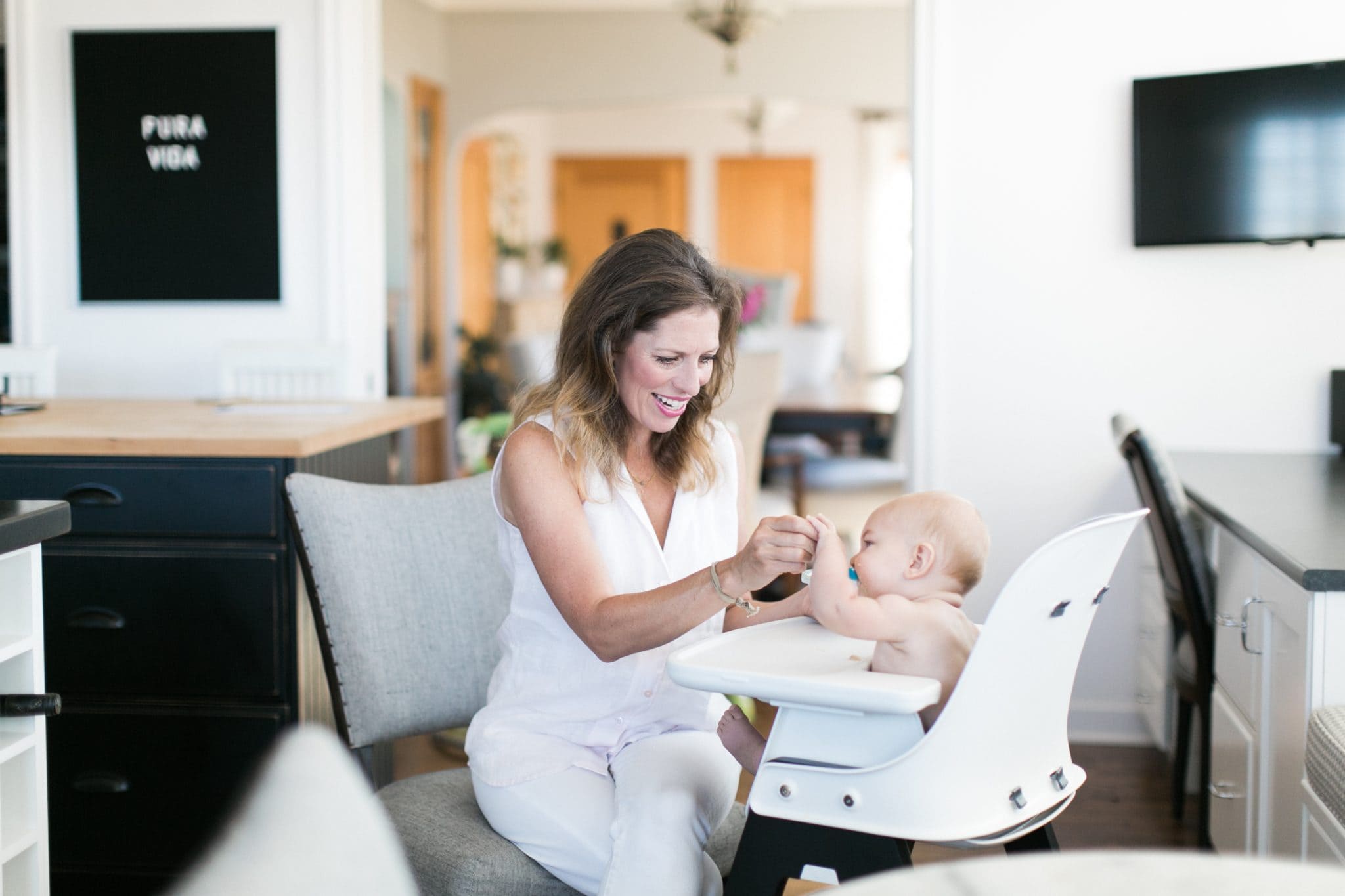
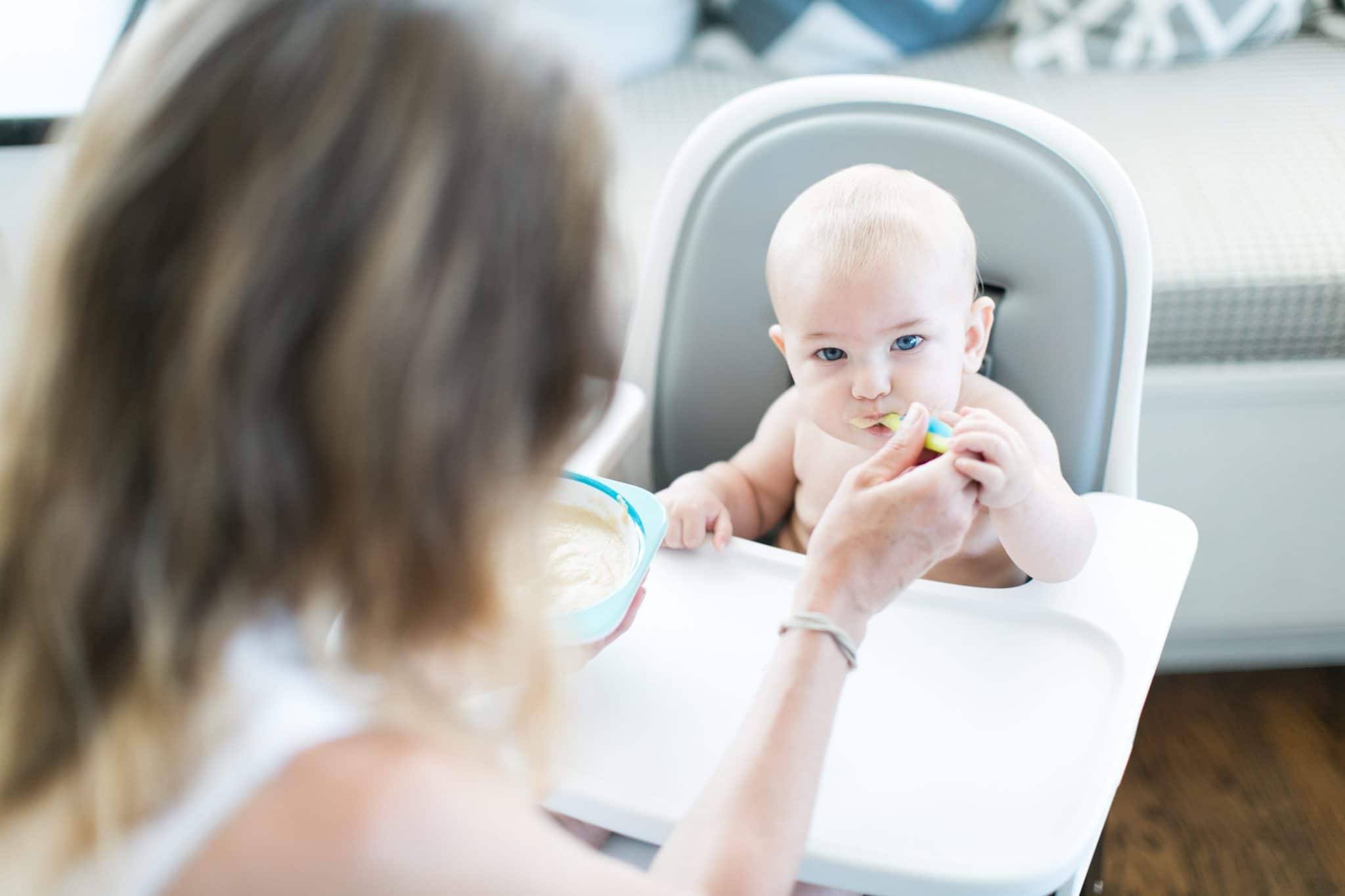
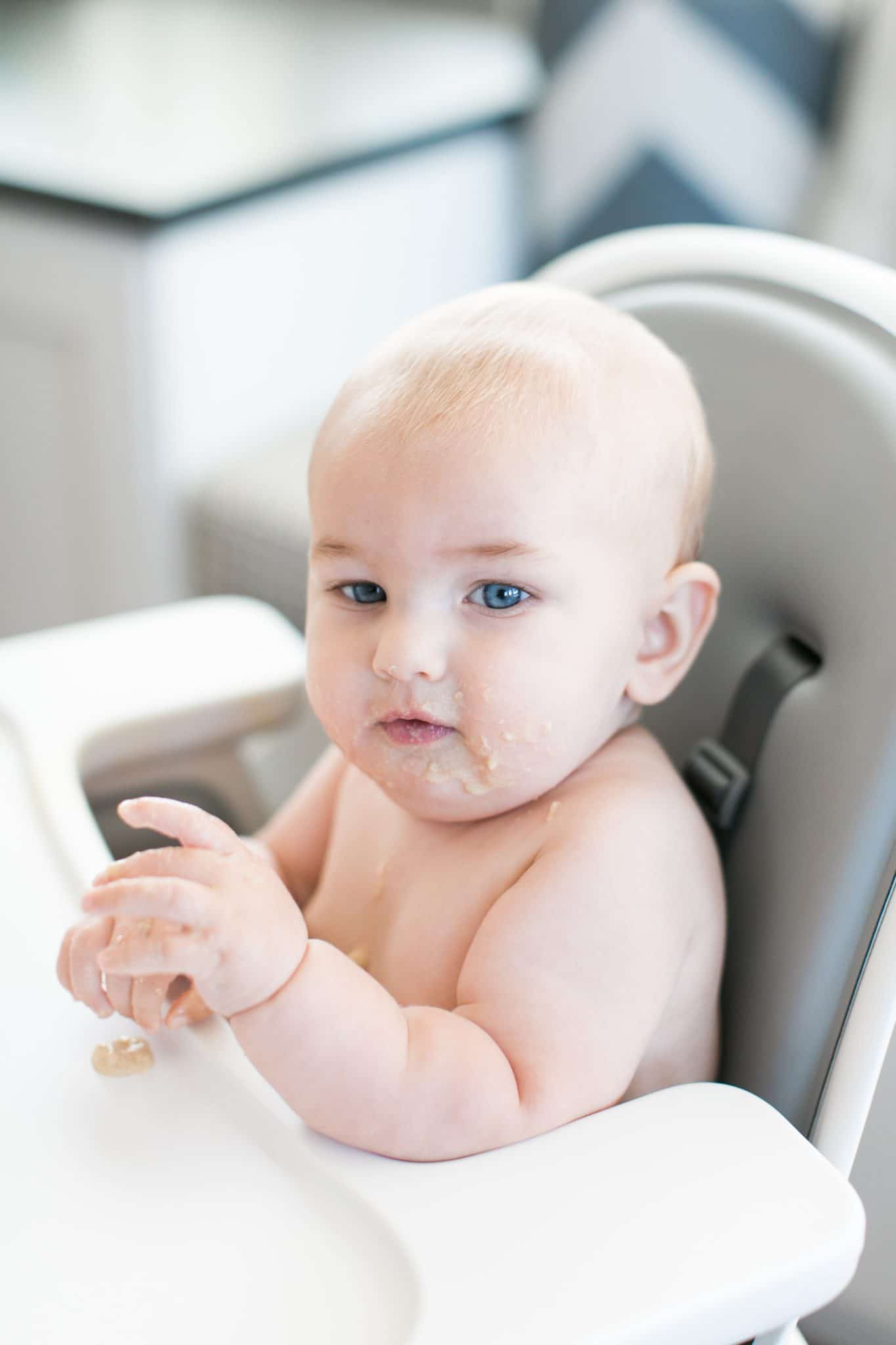
The American Academy of Pediatrics, the World Health Organization and the Institute of Medicine all recommend waiting until your baby is about six months of age to start solids, when he can sit in a high chair on his own and hold his head up, and when his digestive system has matured enough to manage solid foods. Before that, your baby should only drink breast milk or formula. At around six months, babies also start to lose the iron stores they had at birth, so they need to start getting iron from foods.
Theo started to be interested in eating at about five-and-a-half months. He would watch us closely when we ate, tracking the food from our plate to our mouths, and he tried to reach for our plates. That’s a good sign to watch for, to know that your baby is ready to graduate to eating. Because Theo was expressing a strong interest in food, we introduced him to real food a little before his six-month birthday, starting with avocado.
The first time I gave Theo food, I just smashed a little avocado into a paste and gave him a small taste on the end of a soft baby spoon. His face was priceless! Be sure to record these first eating sessions, because the expressions he makes as he tastes things for the first time offer opportunity for a lot of laughter. There’s usually a grimace, a shake of the head and a shiver. But that doesn’t mean he doesn’t like it! It just means it’s a completely new experience for him and it’s a little overwhelming to the taste buds at first.

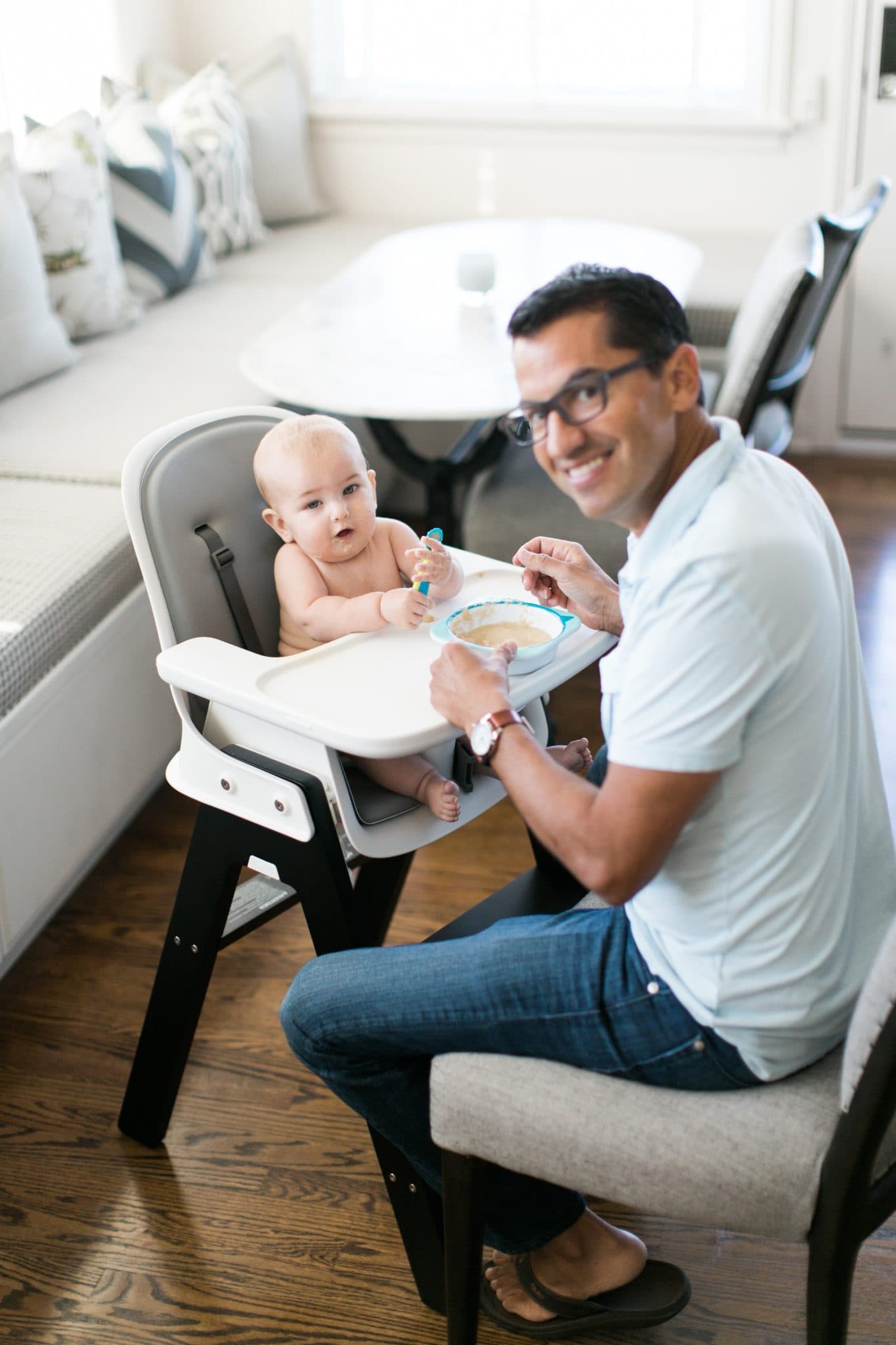
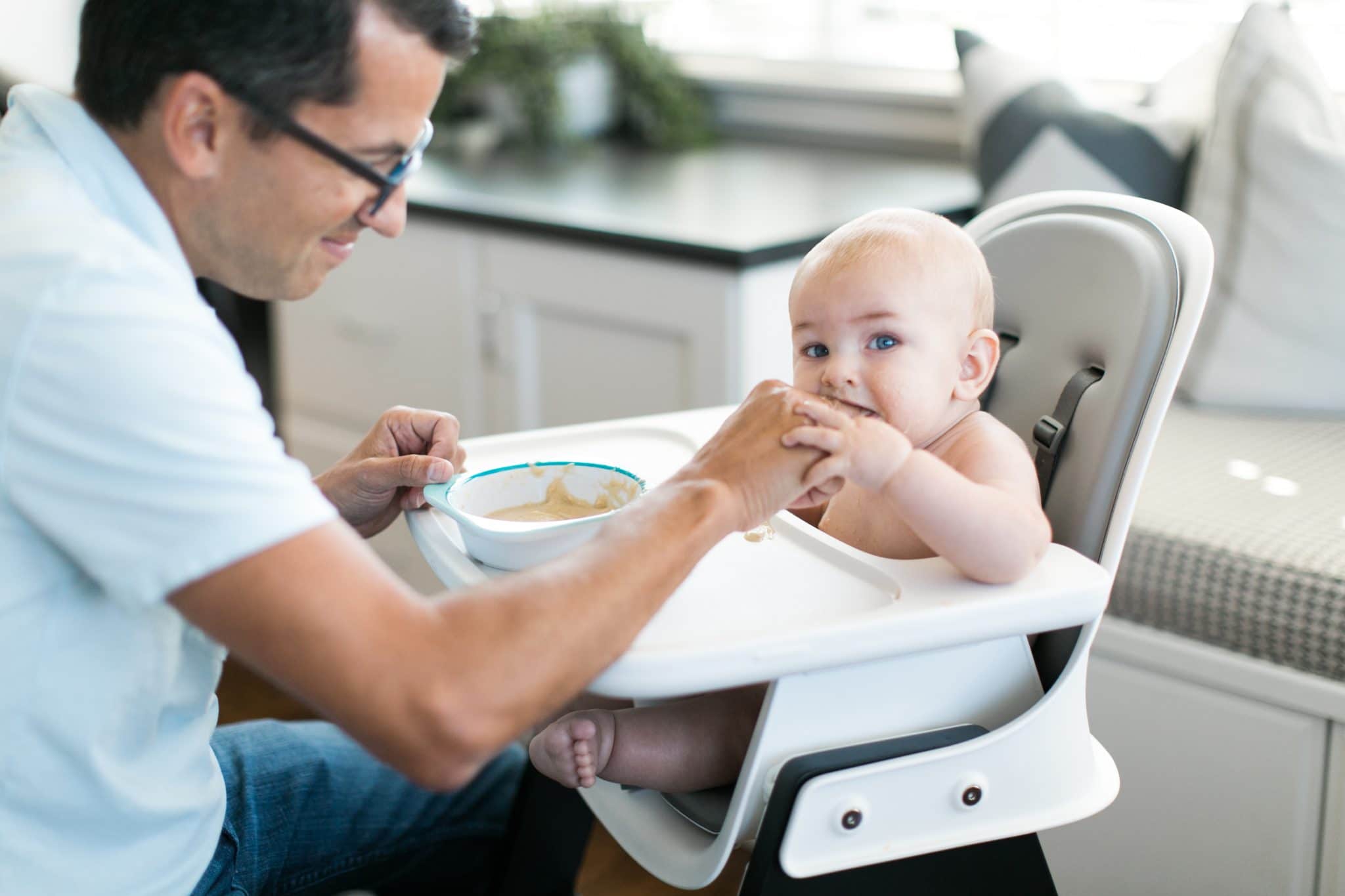
Keep offering the same foods over and over and chances are, eventually he will learn to love all foods. At first, Theo rejected avocado over and over again, and now it’s one of his favorites. If we order avocado toast at a restaurant or make it at home, I have to get him his own piece or he’ll eat all of mine.
When you first start feeding your baby solid foods, the idea is not to fill him up on food, but just to expose him to new tastes, flavors and textures. As he gets more proficient at eating, he’ll start to actually eat more. Chances are, he’ll let you know when he’s ready. Pay attention to his hunger and fullness cues, and try not to coax him into eating more than he needs or wants. Babies are very proficient at eating when they are hungry and stopping when they are full. We don't want to mess with their own equilibrium by trying to make them eat more (or less) than they need to.
When Theo is hungry, he’ll lean forward and open his mouth, ready for me to give him the next bite. When he’s full, he generally turns his head away, leans back or starts playing with his food. Then I know he’s full and the meal is over. Occasionally, Theo will cry when he’s eating, and I’ve learned that his means he doesn’t like what I’ve offered him, so I’ll give him something else. Your baby may give you different cues, but you'll soon learn what they are and what they mean.



When you first start feeding your baby solid foods, it can feel overwhelming and intimidating. What do I start with? What if he chokes? What if he gets sick? Even as a registered dietitian nutritionist I had those fears. But I soon found out it’s not rocket science. Just pick a whole food—almost any fruit or vegetable—and make it into a paste or puree. Soft foods like avocado can just be smashed and hard foods like apples or pears need to be cooked and then pureed. Don’t use salt, but feel free to use any herbs or seasonings you like, and then offer them a spoonful and see what happens! Likely, you’ll get a big smile and a big mess. If you're like me, and you love research and resources, the book Natural Baby Food by Dr. Sonali Ruder has great information on starting solids and lots of recipes for both simple purees and toddler-friendly foods as he gets older.
The general rule of thumb is to offer foods one at a time, giving the same food for a few days to make sure your child doesn’t have an adverse reaction, like vomiting, diarrhea, gas or irritability. I did this at first, giving Theo first avocados, then peaches, then apples, then sweet potatoes, then carrots, then bananas and so on. But eventually, when it seemed like he could eat anything, I just started giving him a new food at lunch (so I could see if he had any adverse reactions during the day) and then I incorporated that food into his regular diet and added another new food at lunch the next day.
There are few myths when it comes to feeding your baby. The first is that you should always start with vegetables, because if you start with fruit, your child will develop a sweet tooth. There is no research to support this, because breast milk itself is sweet, and so humans already have a predisposition towards sweet foods.
Next, doctors used to tell parents to give their child iron-fortified rice cereal as a first food. While babies do need iron, rice cereal doesn’t have a lot of nutritional value, so it’s better to start with fruits and vegetables and maybe an iron-fortified baby oatmeal or whole grain cereal. That's what we did. For the first few weeks, I would make a few tablespoons of baby oatmeal with either water or breast milk and stir in a few tablespoons of fruit puree. Theo loved it.
Also, recent conventional wisdom has been to avoid giving babies highly allergenic foods in the first year—things like egg whites, fish, soy and peanuts. We now know that avoiding these foods in the first year may actually increase the risk for developing a food allergy. Dairy products like cheese and yogurt are okay, but babies shouldn't drink cow's milk before one year. Introduce allergenic foods one at a time, preferably at home, and look for signs of an allergic reaction, including skin hives, vomiting, diarrhea, runny nose, coughing, or difficulty breathing. We decided to introduce all of the allergenic foods to Theo between seven and eight months, and luckily he had no reactions to any of them.
There are some foods to avoid, however, including honey, raw milk or raw milk cheeses (unpasteurized) or undercooked or raw meat, seafood or eggs. Feeding your baby these foods may cause him to become sick. Limit salt in the first year, because too much salt is hard on your baby's kidneys.
You might also want to consider your family policy about eating sugar. Certainly, you should limit the amount of sugar your baby eats, because sugar doesn't contain any nutrition for the calories. However, Elie and I decided to let Theo have the occasional bite of a sweet treat (ice cream, a small nibble of pie, a taste of a scone), because we want him to have a healthy, balanced relationship with food. In my experience as a nutritionist, when you make a food off-limits, it sets it up as desirable. Instead, I would like Theo to know that all foods can be enjoyed from time to time and in reasonable portion sizes, so we have decided not to make sugar taboo. Of course, he doesn't have something sweet every day, and when he does, it's a very small amount.
At about 6 months of age, babies can eat pureed foods. When you first offer your baby food, keep it pretty thin, and then gradually thicken the consistency of the food as your baby gets used to eating. He'll let you know when he's ready for small, soft pieces of food, usually around eight months. You may have heard or read about 'baby led weaning,' which is essentially giving your child small pieces of soft, mashable food and letting him choose what and how much to eat. It sounds great, in theory, but I found that it didn't work for Theo until we has about 8 1/2 months old and pick up food and feed himself. Before that, I had to spoon-feed him.
If you choose to follow baby-led weaning, or even if you're spoon feeding your baby, it's important to avoid giving your baby any foods that present a choking hazard, including hot dogs, whole nuts and seeds, popcorn, whole grapes, raisins, hard candy or any other food that can't be easily squished between the gums. To be safe, know what to do when your child is choking.


Theo was very interested in eating, so he pretty quickly started eating three meals a day, plus occasional snacks. He is also still breastfeeding six to eight times a day (or more). When he first started eating, his meals were mostly just a pureed fruit or vegetable or combination. I also gave him small amounts of yogurt, nut butters and some soft meats. Now, at nine months, I try to give him mini versions of the same meals we eat. As I mentioned, Theo has just recently mastered feeding himself, so he really likes any food he can pick up. Here is a sample eating schedule at nine months, with some examples of Theo's meals.
6:00 a.m. - Wake and breastfeed.
7:00 a.m. - Breakfast
9:00 a.m. - Breastfeed and nap.
10:30 a.m. - Wake and breastfeed.
11:30 a.m. - Lunch
1:30 p.m. - Breastfeed and nap
3:00 p.m. - Wake and breastfeed.
3:30 p.m. - Snack (sometimes)
5:00 p.m. - Dinner
6:30 p.m. - Breastfeed and bedtime.
Those are just some examples of the kinds of things Theo eats at meals and snacks. Usually, his dinner is whatever we had for dinner the night before (because we eat our dinner after he goes to bed). So, it varies. For the fruit and vegetable purees, I make big batches of pureed pear or apple or peach or sweet potato or carrot and then I freeze the purees in ice cube trays and store the frozen cubes in ziplock bags in the freezer. It makes mealtime so easy.
Now that I know Theo is an enthusiastic eater, I'm really hoping he's going to want to join me in the kitchen! I'm looking forward to cooking together.
I hope this little primer is helpful for you, if your little one is becoming interested in eating. If you have any questions, I'm always happy to respond to comments or email.
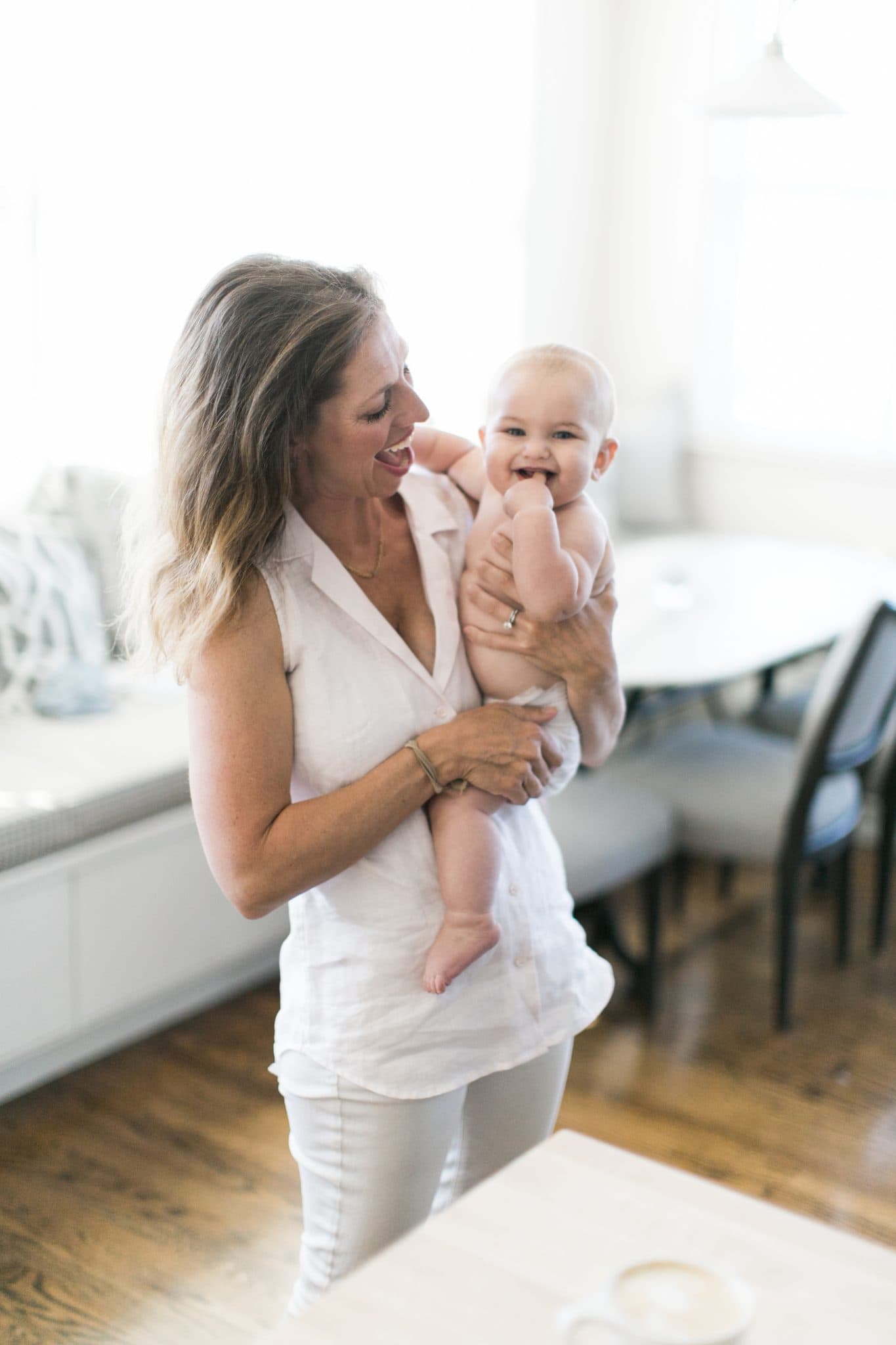
I received a complementary copy of Natural Baby Food to review, but all comments and opinions in this post are my own. These photos were taken by Matthew Land Studios when Theo was six months old.
I love when I see an email from a friend, and that’s how I think of you. I hope you feel the same. In my newsletter, I share the kinds of recipes and stories I used to blog about. You’ll get the recipes I’m cooking for my family as well as anything else I think might bring more connection or more joy.